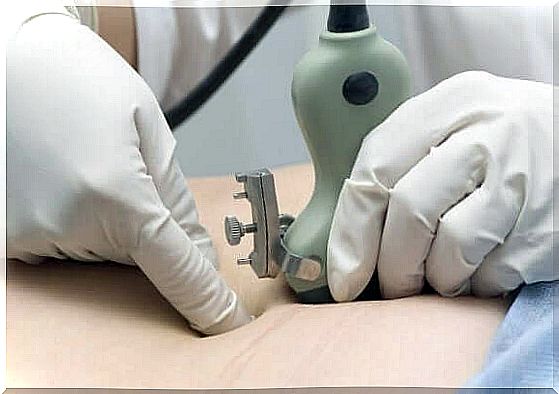What Are The Complications Of Oligohydramnios?

Have you ever heard of oligohydramnios? Specialists use the term to refer to a reduced amount of amniotic fluid. Amniotic fluid is needed for your baby to live in the womb. It is the protective layer around the fetal body. In addition, it helps the fetus’ muscles, respiratory system and even digestive system to develop properly.
This protective layer begins to grow 12 days after conception. In fact, its composition changes as the baby develops.
Over time, children begin to move with the help of amniotic fluid. Therefore, it is important to have a healthy amount. If the amount of fluid is too high or too low, the child may have problems with his growth and also development. If the amount is too low, it is called oligohydramnios. If the amount is too high, it is called polyhydramnios.
What is oligohydramnios and how do you know you have it?
That being said, this is when you do not have enough amniotic fluid around your baby. It is measured by various methods, one of which is ultrasound. You can do this in different stages of pregnancy, and you may need to do several ultrasounds to check and treat the condition.
What causes a reduced amount of amniotic fluid?
- Abnormalities in the mother, such as preeclampsia, placental abruption and high blood pressure.
- Side effects from other medications. In fact, some may be non-steroidal anti-inflammatory drugs (or NSAIDs from the English Non-Steroidal Anti-Inflammatory Drugs).

- Prolonged or unborn pregnancy. In other words, it is a pregnancy over 40 weeks.
- The fetus has a condition that involves a poor development of the urinary functions.
- Problems with growth and development of the fetus in the womb. It is called intrauterine growth retardation (IUGR).
- Changes in chromosome formation.
What are the signs of oligohydramnios?
In general, the condition has no special symptoms that are easy to detect. The mother may think she has complications from oligohydramnios if she feels that the baby is suddenly moving less. Another sign is poor uterine growth compared to normal.
What are the consequences?
If you discover oligohydramnios during the first half of pregnancy, the most serious risks are:
- Malformations. Oligohydramnios can have consequences at birth such as compression of the baby’s organs and prenatal injuries.
- Increased chance of miscarriage or fetal death.
If you diagnose it during the second half of pregnancy, some negative consequences can be:
- Decreased growth in the uterus that can lead to deficiencies in the baby’s organ development.
- Greater risk of giving birth prematurely.
- Complications during childbirth. For example, you can get compression of the umbilical cord. In addition, you may need to have a caesarean section.
Treatment for oligohydramnios
- Amnioinfusion at birth. To do this, a specialist inserts a serum into the intrauterine cavities through a catheter. It helps to raise the fluid level to normal. In addition, the pressure on the umbilical cord is reduced, thereby reducing the risk of cesarean section.
- Fluid injections or amniocentesis. This is similar to the previous procedure, but you do it before the birth instead of during. It is important to clarify that the fluid that the doctor injects lasts only about a week. It is a temporary measure that helps doctors check and ensure that the child develops normally.

- Rehydration of the mother. Getting IV fluids or drinking more water also helps to increase the amount of amniotic fluid in the uterus.
It is important to know the amount of amniotic fluid that is normal for your baby to grow and develop fully. Remember that this liquid is your child’s home for many weeks and therefore needs to be as good as possible.
If you think you have oligohydramnios , talk to your doctor to see what tests you need to diagnose it.









